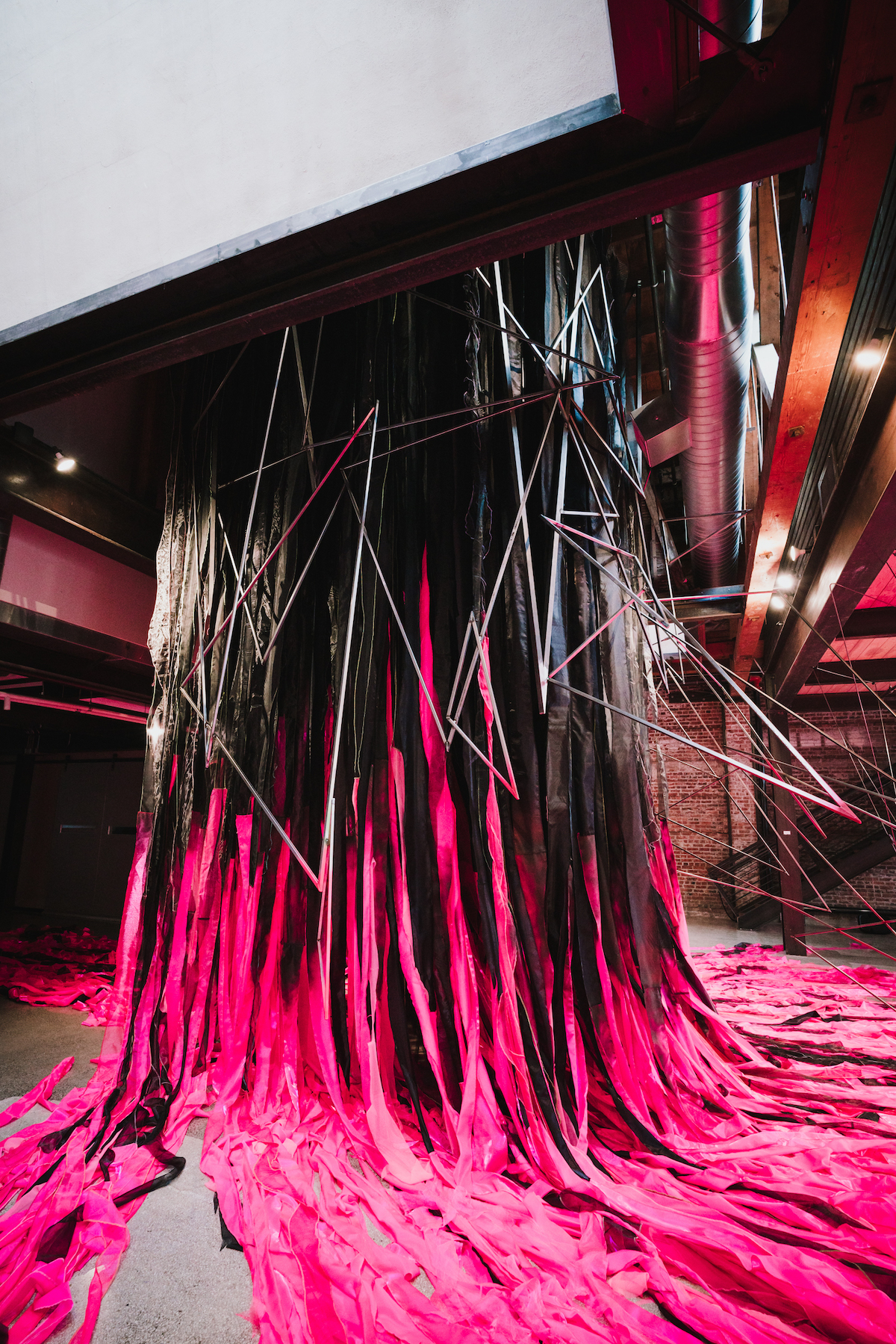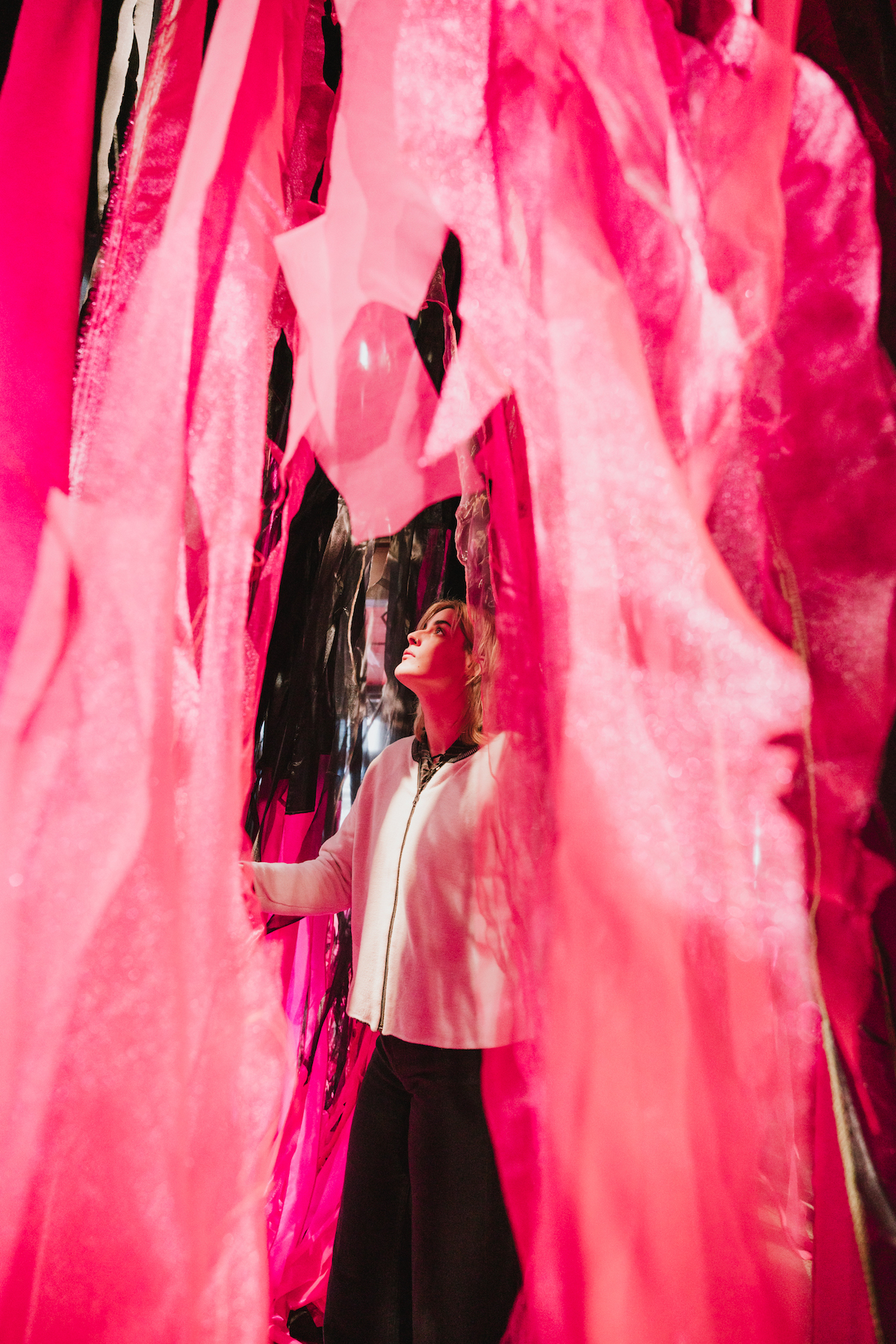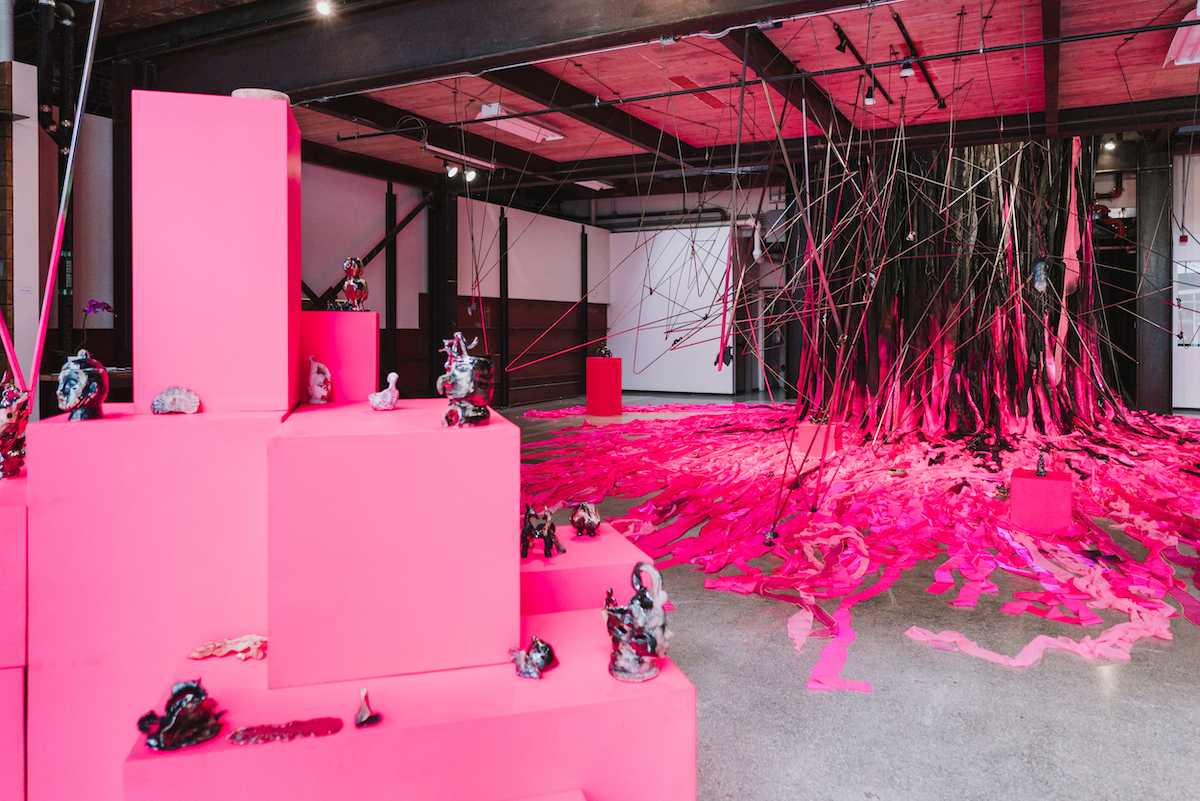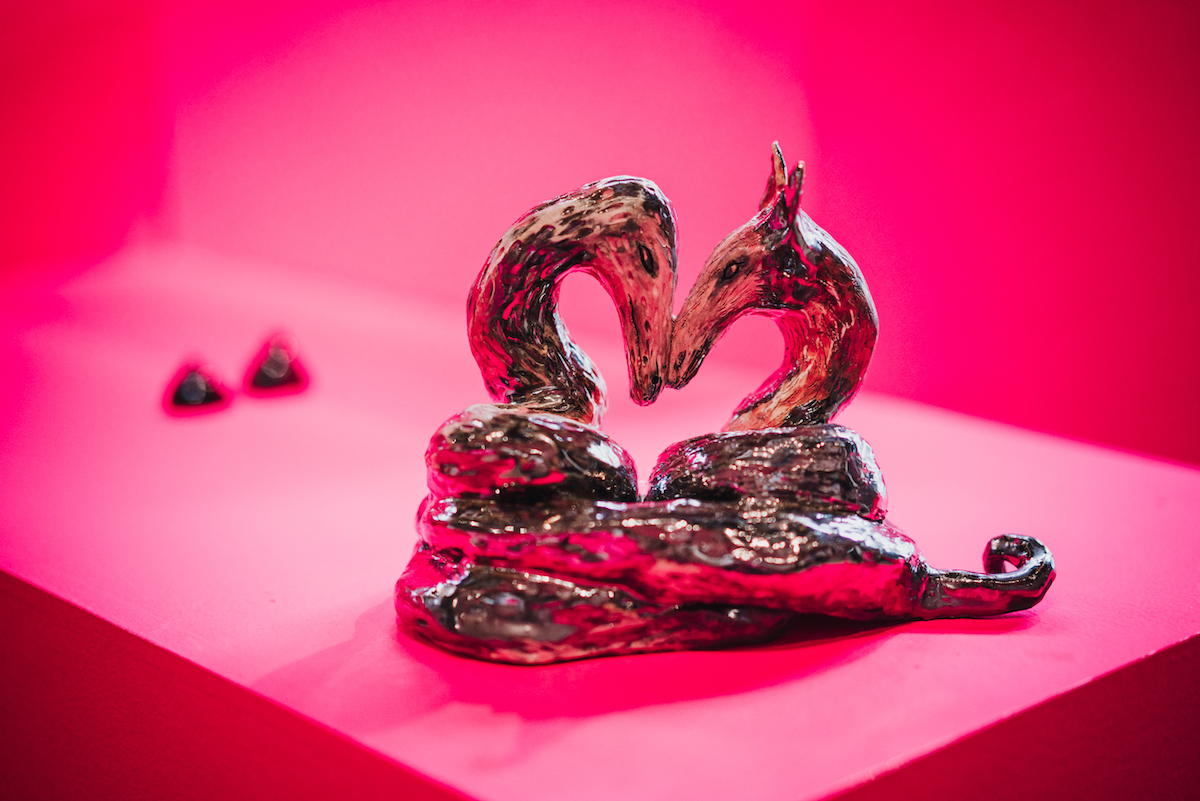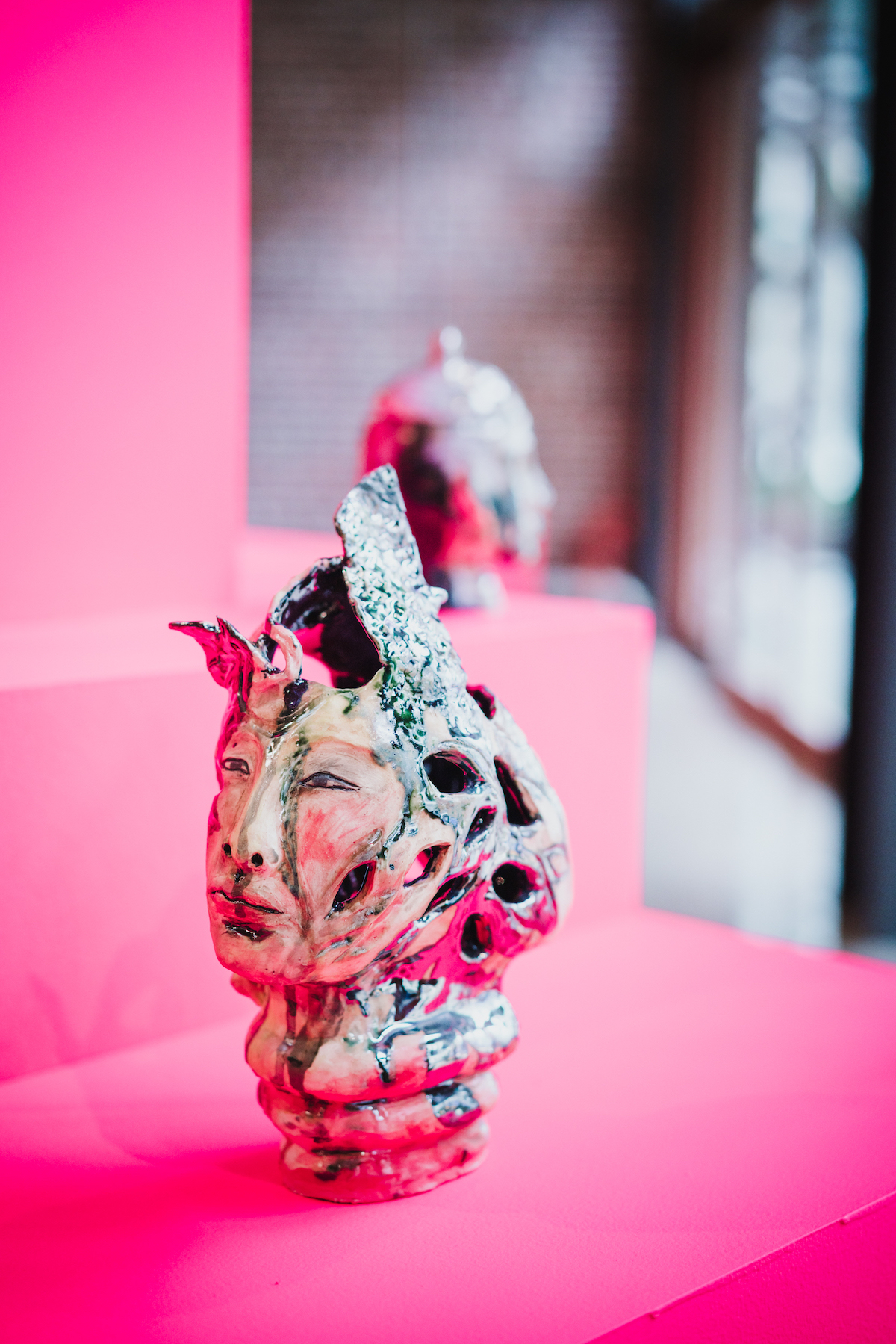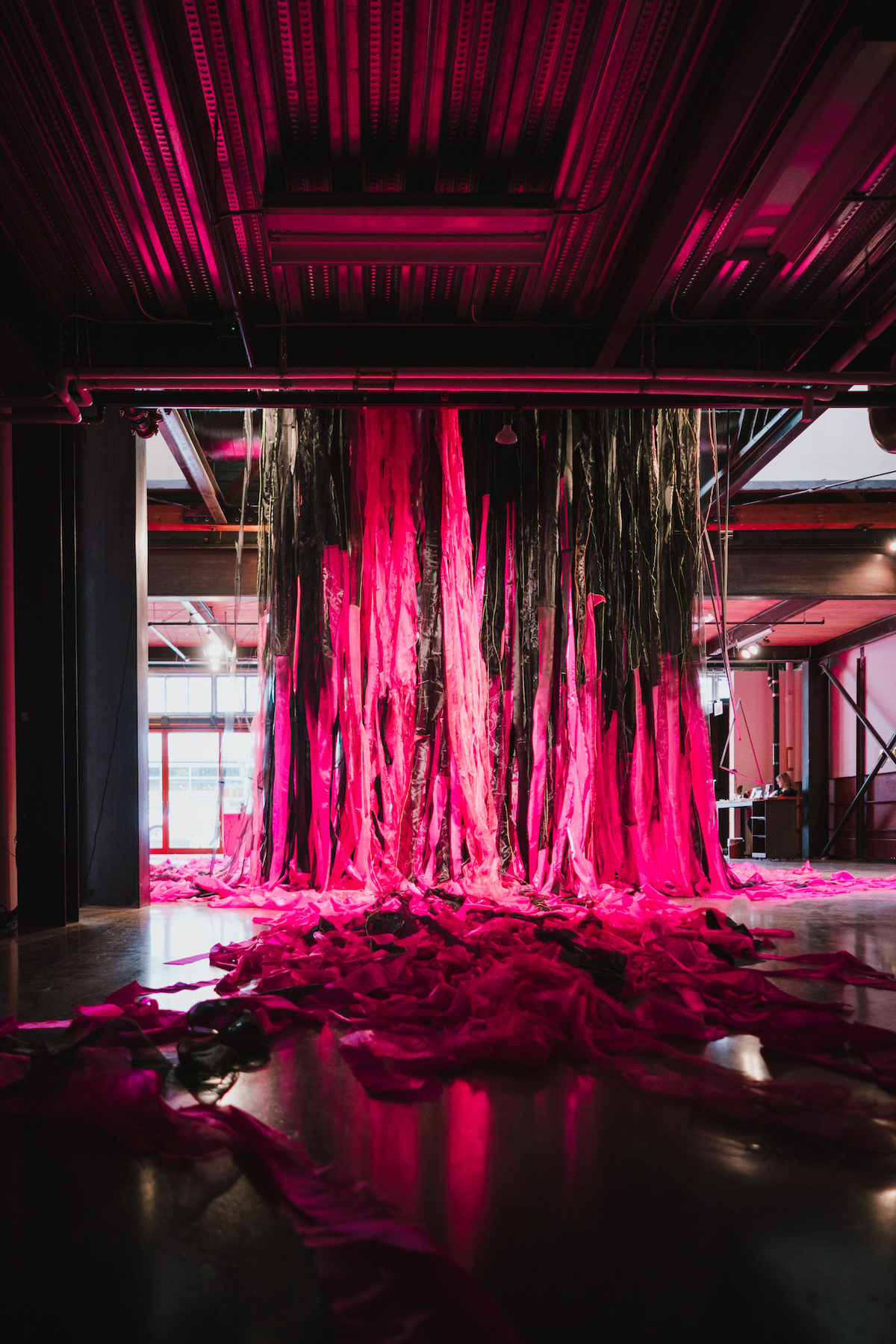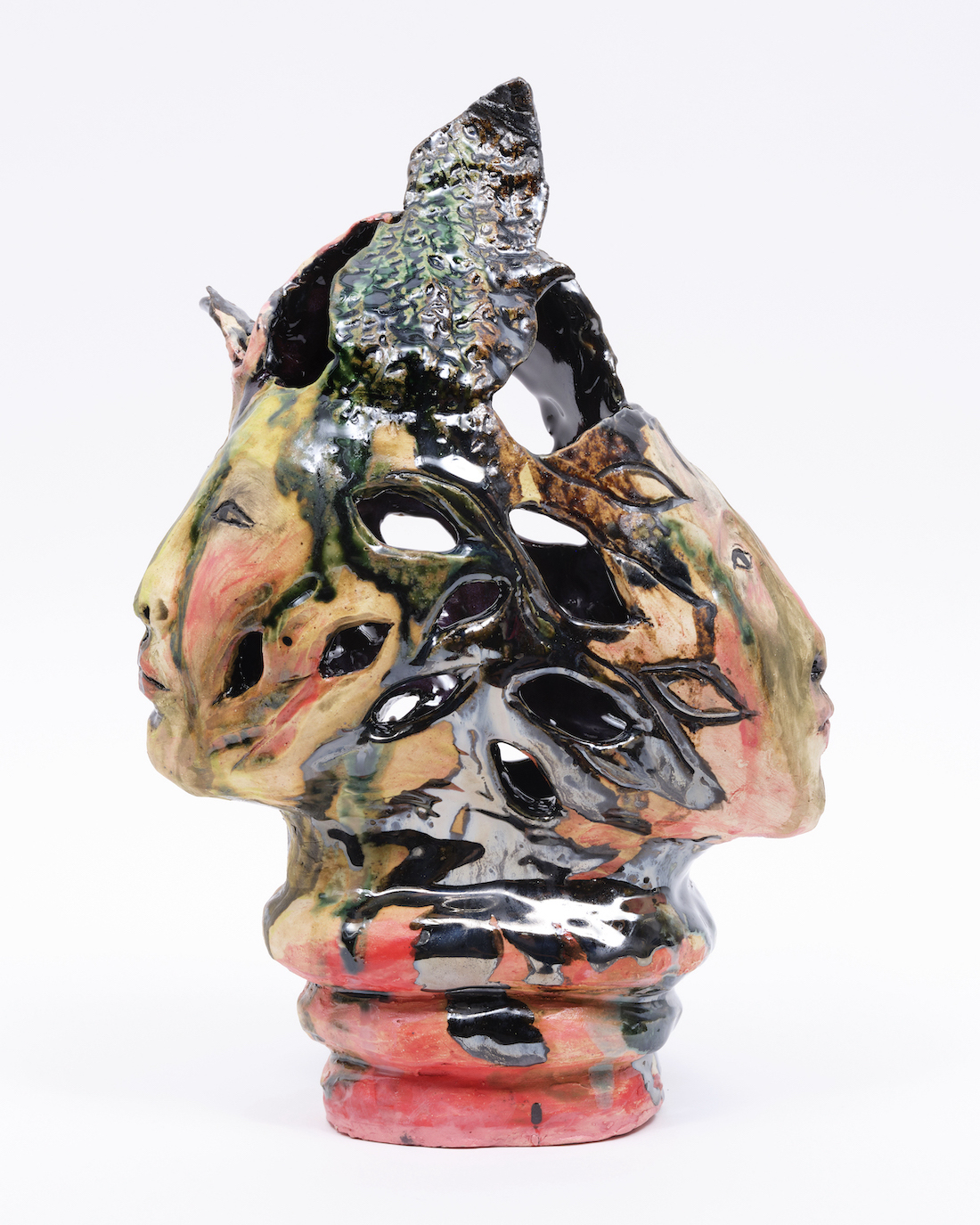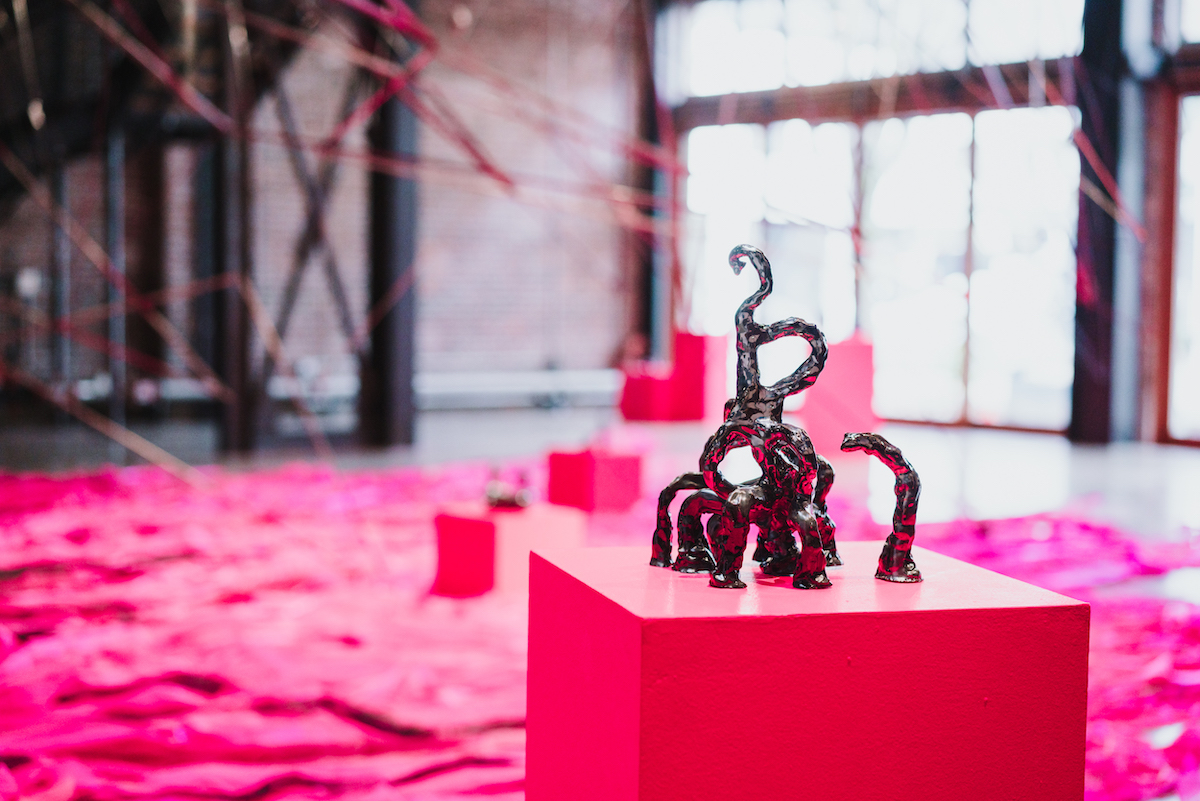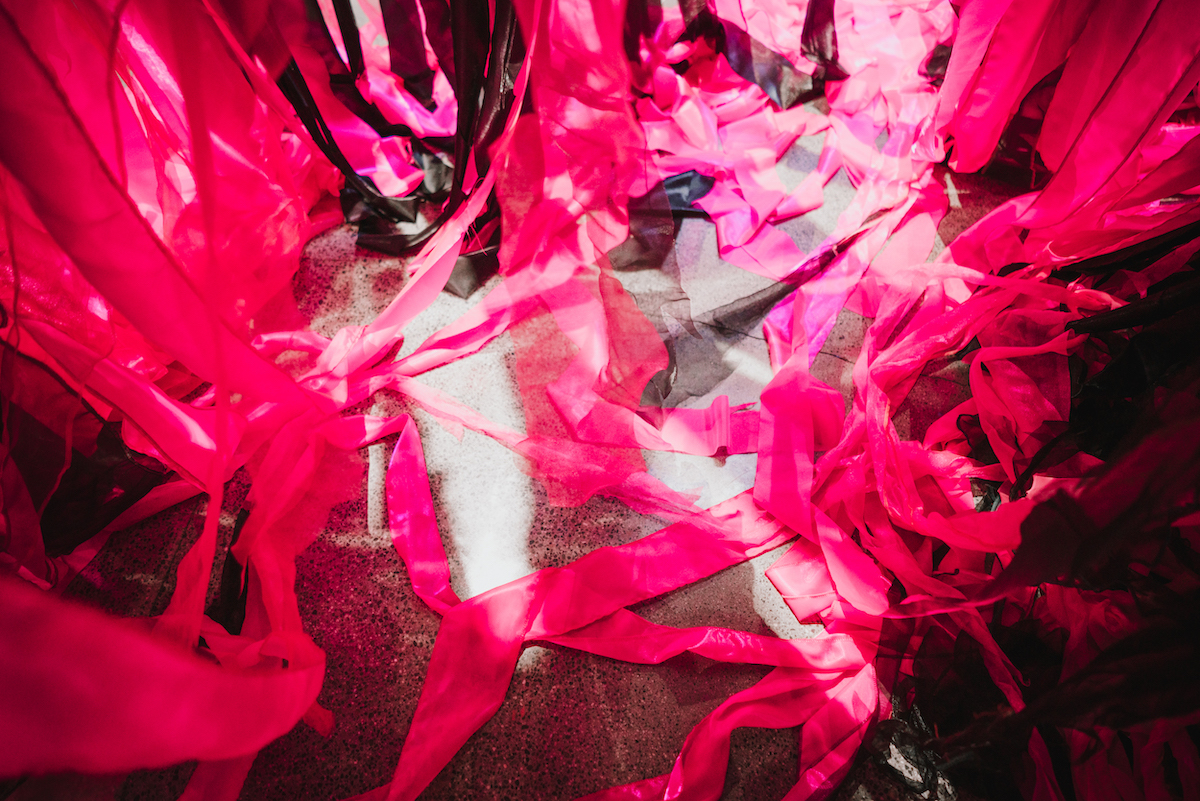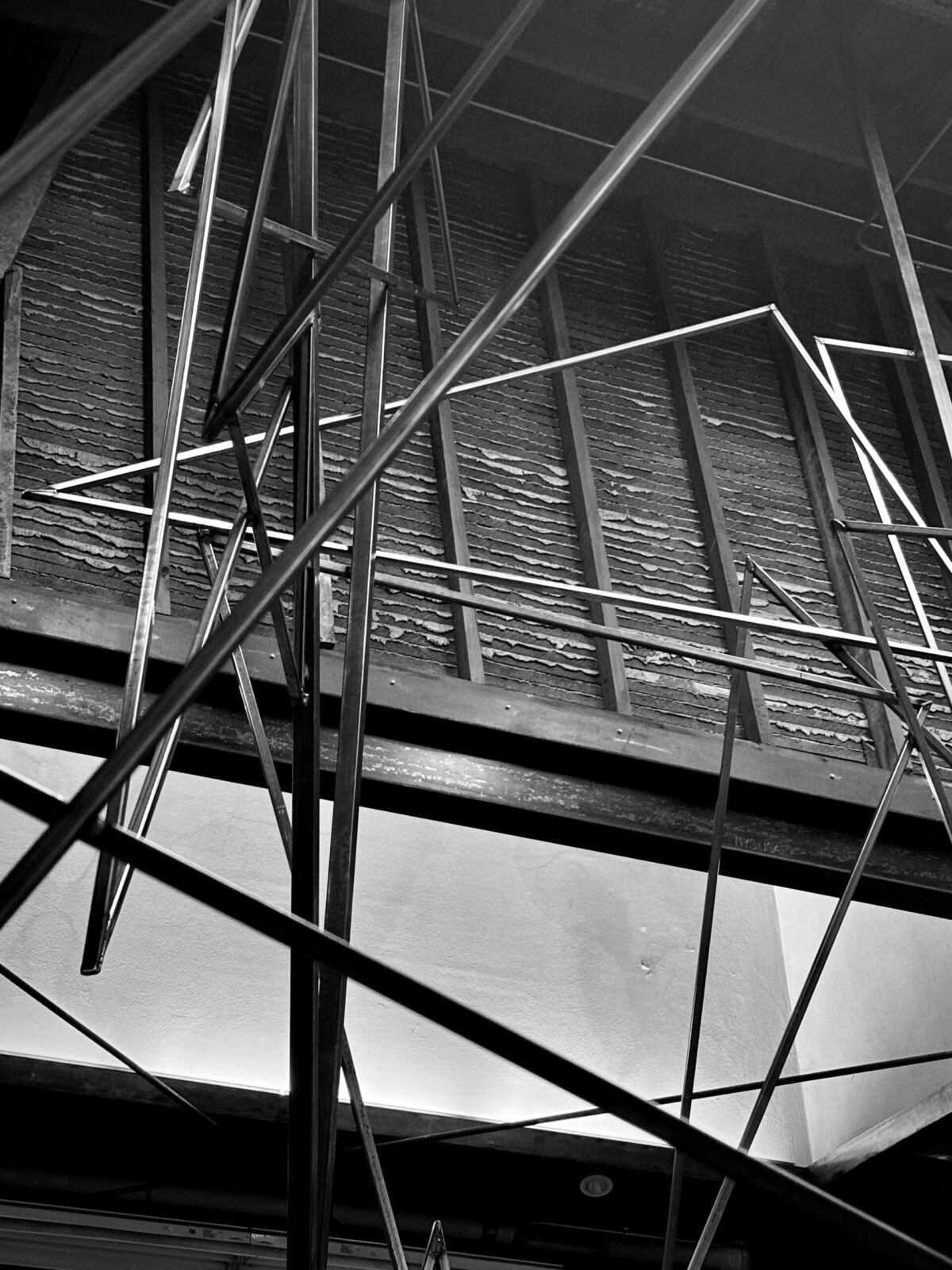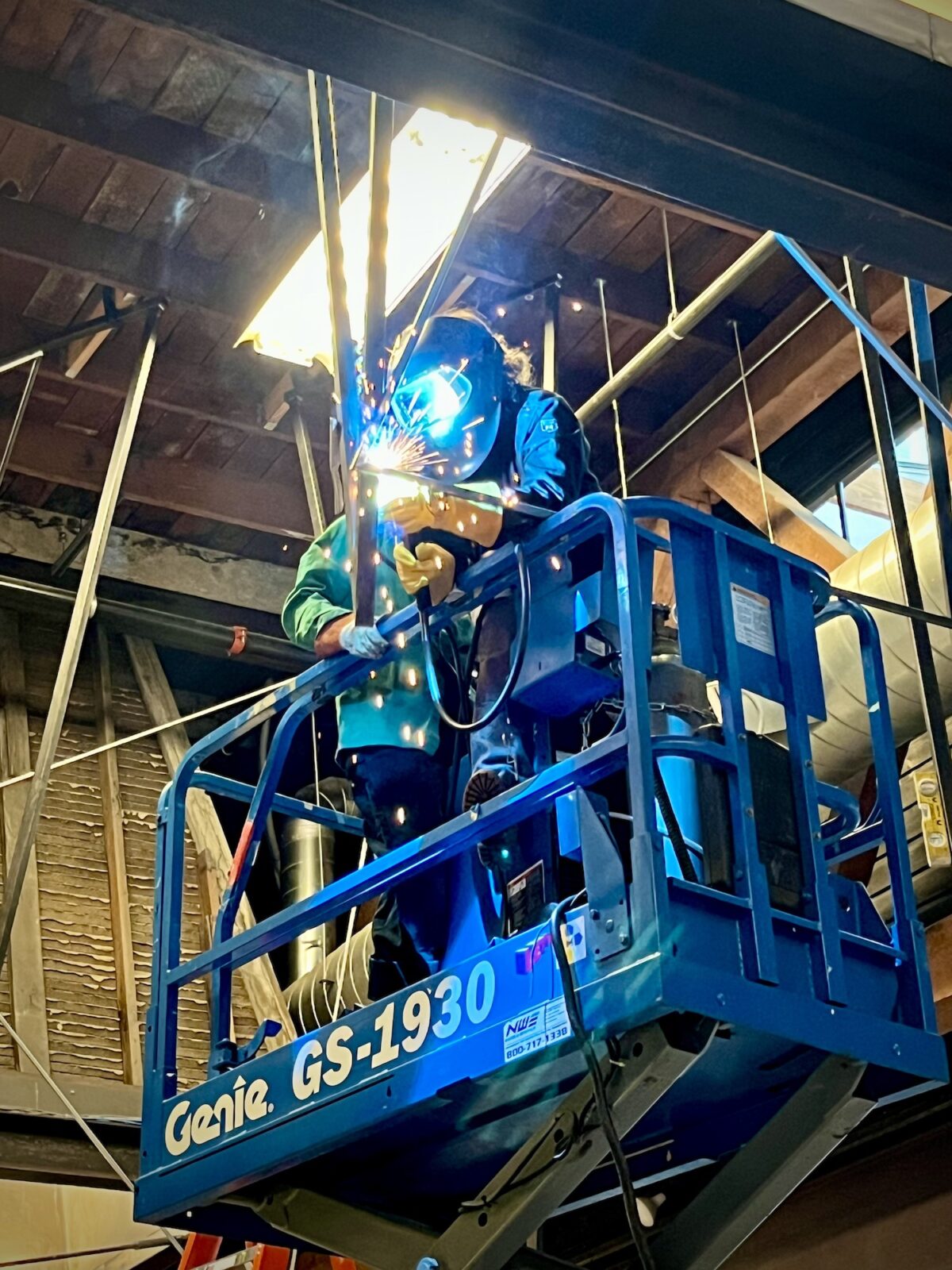January 9 – February 2
Saturday, February 3 @ 5 – 7pm
Featuring live sound performance by Lau Nau, Seattle’s SLOWBURN Dance Company, and readings by J.A. Dela Cruz-Smith and Daniel Tam-Claiborne.
February 6 – March 28
Tuesday – Saturday, 12 – 5pm
Thursday, March 21 @ 6pm
Featuring House of Kilig
Follow & share on Instagram: #sarajmadart
In her multimedia exhibition Why should our bodies end at the skin?*, New York-based artist Sara Jimenez explores the intersections of geology, mythologies, and intergenerational bonds. Sculptural works inhabit the studio from floor to ceiling, showcasing angular bent steel, vibrant flowing fabric, columnar pedestals, and symbolic vessels. Along with an immersive audio component, these elements comprise an installation inspired by ancient funeral artifacts, animist belief systems, and the volcanic landscape of the Philippines, Jimenez’s ancestral country.
Jimenez carries these themes into her principal sculptural element, where she considers the volcano as an uncontrollable force, interrupting and distorting boundaries, collapsing worlds, and rearranging time and space. In the center of the studio she creates an inverted volcano made of black, bent, welded steel triangles that jut out of the ceiling like stalactites. Increasing in number as they approach the front of the studio, these shapes loom overhead to form an upside down mountain range that laterally spans the studio from front to back. Cascading from the ceiling down through the largest triangles are tumbling swaths of fuschia and black cloth, creating a lava flow of fabric that blankets the studio floor.
Adjacent to the volcanic structure sits a collection of staggered, bright pink pedestals. Built to look like columnar basalt, they mirror the shape of the volcano in miniature while supporting a host of anthropomorphic ceramic vessels. These abstract works are an amalgamation of human, animal, and plant forms. Some vessels have faces that reference Jimenez and her family members; others refer to mythological Filipino animals or images of the okir, a precolonial plant-based design from the Southern Philippines. Many of the ceramics also contain textile imprints from embroidered piña (pineapple fiber) clothing belonging to the artist’s father and grandmother. The vessels were originally inspired by ancient burial jars found in caves throughout the Philippines, created to honor the dead and their transition to the next life.
Permeating the installation is a soundscape created in collaboration with Finnish composer, producer, and musician Lau Nau, which features field recordings including sounds from volcanoes and black holes, human whispers, and compositions from Nau’s synth. The effect is a continual rumbling that fills the space and can be heard and felt as one walks through the exhibition. This multisensory component blends with Jimenez’s striking sculptural works to create an immersive exploration of spaces and objects that simultaneously contain and reveal the past and present.
*Title quote by Donna Haraway
We acknowledge the support of the Canada Council for the Arts as well as the Finnish Cultural Foundation in making this exhibition possible.
![]()
International Examiner
March 4, 2024
